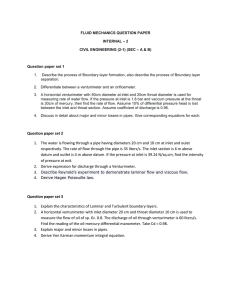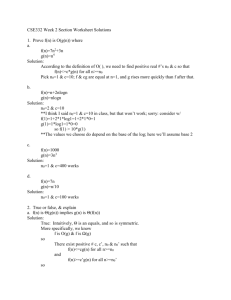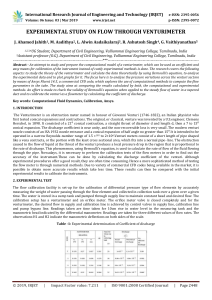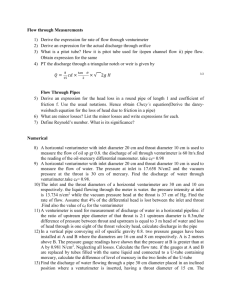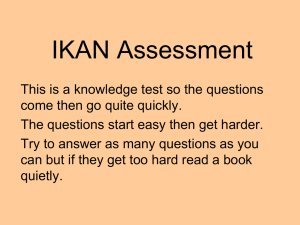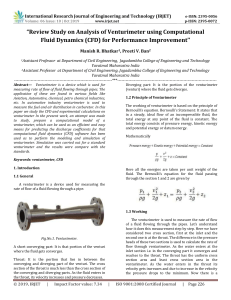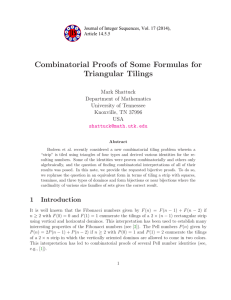The venturimeter used as gas fraction meter
advertisement
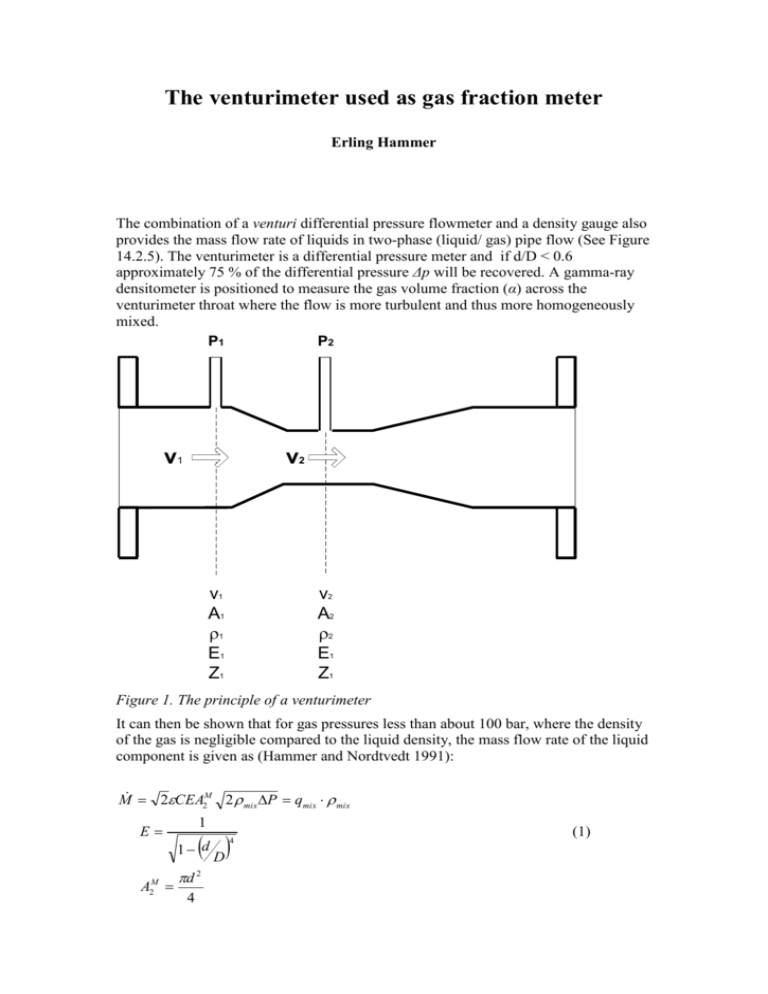
The venturimeter used as gas fraction meter Erling Hammer The combination of a venturi differential pressure flowmeter and a density gauge also provides the mass flow rate of liquids in two-phase (liquid/ gas) pipe flow (See Figure 14.2.5). The venturimeter is a differential pressure meter and if d/D < 0.6 approximately 75 % of the differential pressure Δp will be recovered. A gamma-ray densitometer is positioned to measure the gas volume fraction (α) across the venturimeter throat where the flow is more turbulent and thus more homogeneously mixed. P1 P2 v1 v2 v1 A1 1 E1 Z1 v2 A2 2 E1 Z1 Figure 1. The principle of a venturimeter It can then be shown that for gas pressures less than about 100 bar, where the density of the gas is negligible compared to the liquid density, the mass flow rate of the liquid component is given as (Hammer and Nordtvedt 1991): M 2CEA2M 2 mix P qmix mix 1 E D 1 d A2M d 2 4 4 (1) where C is the discharge coefficient of the venturimeter ε is the expansibility coefficient of the fluid E is the velocity of approach factor A2M is the throat cross section area mix gass liq gass (1 ) liq (1 ) liq since gas liq This gives CEA2M 2(1 ) liqP (1 ) liqqmix liqqliq where qliq is volume flow rate of the liquid phase and is the gas fraction in the venturi throat and hence: q CEAM liq 2 2(1 ) liq P (2) The discharge coefficient C and the expansibility coefficient can for all practical reasons in multi flow measurements be set to 1. In multi phase flowmeters a density gauge will always be installed to measure the gas fraction . Thus the gas fraction will be monitored and the liquid flow rate can be measured according to equation 2.The accuracy of the measurement will increase with increasing velocity and decrease with increasing gas fraction. To obtain better mixing the venturimeter must be installed in vertical pipes with upward flow. An interesting feature using a venturimeter is that if the velocity of the liquid (vliq) is measured, by using the cross correlation of signals from two sets of capacitance electrodes in the venturimeter throat, the gas fraction can be found from equation 2. The capacitance electrodes should be naked and mounted inside the throat wall. They should also have short axial lengt so the small bobbles can be measured to determine the liquid velocity: 1 2 2 C 2 E 2 P 2C 2 E 2 P 1 v22liq liq v22liq liq (3) Using the fact that qliq A2M (1 )v2liq where v2liq is the liquid flow velocity in venturi throat Thus the gas fraction in the venturi throat can be found without any radioactive gauges. That is important for delivering multi-phase meters to foreign countries.
